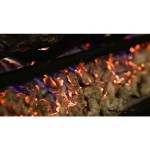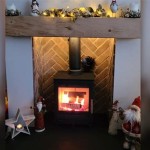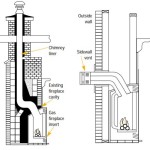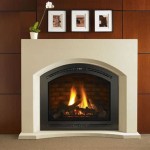Gas Corner Fireplaces: A Comprehensive Guide
Gas corner fireplaces represent a sophisticated and efficient heating solution for modern homes. Unlike traditional fireplaces that require extensive masonry and venting, gas corner fireplaces offer flexibility in installation while providing the aesthetic appeal of a flickering flame. These fireplaces are designed to fit neatly into the corner of a room, maximizing space utilization while creating a focal point. This article provides a comprehensive overview of gas corner fireplaces, covering their design, installation, key advantages, maintenance, and relevant safety considerations.
The primary function of any fireplace is to provide supplemental heat. Gas corner fireplaces accomplish this through the combustion of natural gas or propane. The resulting heat is then distributed into the room, either through radiant heat directly emitted from the firebox or through convection, where air is heated and circulated. The efficiency of a gas corner fireplace is a crucial factor to consider. Modern gas fireplaces boast significantly higher efficiency ratings compared to their wood-burning counterparts, minimizing heat loss through the chimney and maximizing the amount of heat that effectively warms the room.
The design of gas corner fireplaces has evolved significantly over the years. Early models were often simple metal boxes with a gas burner. Contemporary gas corner fireplaces are available in a wide range of styles, from traditional designs that mimic the look of a wood-burning fireplace to sleek, modern models with minimalist aesthetics. The visual appeal is further enhanced by features such as realistic artificial logs, decorative glass media, and adjustable flame height and intensity. The ability to customize the look and feel of a gas corner fireplace allows homeowners to integrate it seamlessly into their existing décor.
Space Optimization and Versatile Installation
The defining feature of gas corner fireplaces is their ability to fit snugly into the corner of a room. This design element offers several advantages, particularly in smaller spaces. By utilizing the corner, the fireplace occupies minimal wall space, freeing up valuable room for furniture and other design elements. This makes gas corner fireplaces an ideal choice for apartments, condominiums, and houses where space is at a premium.
Furthermore, the corner placement often allows for more flexible installation options. In some cases, the existing structure of the building may make it easier to run venting through a corner than along a straight wall. Direct-vent gas corner fireplaces, which draw combustion air from outside and expel exhaust gases directly outdoors through a sealed system, offer even greater installation flexibility. These units do not require a traditional chimney, making them suitable for homes without existing masonry structures or where chimney construction is impractical.
The installation process typically involves running gas lines to the fireplace, connecting the venting system, and ensuring proper electrical connections for features such as blowers and remote controls. It is strongly recommended that a qualified and licensed professional handle the installation of gas corner fireplaces to ensure safety and compliance with local building codes. Improper installation can lead to gas leaks, carbon monoxide poisoning, or other hazards.
Efficiency, Convenience, and Environmental Considerations
Compared to traditional wood-burning fireplaces, gas corner fireplaces offer significant advantages in terms of efficiency, convenience, and environmental impact. As mentioned earlier, modern gas fireplaces can achieve efficiency ratings exceeding 70%, meaning that a substantial portion of the energy produced by burning gas is converted into usable heat. This translates into lower energy bills and reduced reliance on other heating sources.
The convenience of gas fireplaces is another major selling point. Unlike wood-burning fireplaces, which require the procurement, storage, and handling of firewood, gas fireplaces are ready to use at the touch of a button or flip of a switch. Many gas fireplaces feature remote controls that allow users to adjust the flame height, heat output, and even program the fireplace to turn on and off automatically. This level of control and automation makes gas fireplaces a particularly attractive option for busy homeowners.
From an environmental perspective, gas fireplaces generally produce fewer emissions than wood-burning fireplaces. While the combustion of natural gas or propane does release carbon dioxide, a greenhouse gas, the amount of particulate matter (PM) emitted is significantly lower than that produced by burning wood. Particulate matter is a major contributor to air pollution and can have adverse health effects. The use of a direct-vent system further minimizes emissions by ensuring that combustion gases are vented directly outside.
Maintenance, Safety, and Long-Term Operation
While gas corner fireplaces are relatively low-maintenance compared to wood-burning fireplaces, regular maintenance is still essential to ensure safe and efficient operation. A qualified technician should inspect the fireplace annually, checking for gas leaks, inspecting the burner and venting system, and cleaning the glass front. Regular cleaning prevents the buildup of soot and other deposits that can impair performance and reduce visibility.
Safety is paramount when dealing with gas appliances. Carbon monoxide detectors should be installed in the vicinity of the fireplace and tested regularly. These detectors provide an early warning system in the event of a carbon monoxide leak, a potentially fatal hazard. It is also crucial to ensure that the venting system is properly sealed and free of obstructions. Blocked vents can cause carbon monoxide to accumulate inside the home.
The longevity of a gas corner fireplace depends on several factors, including the quality of the unit, the frequency of use, and the regularity of maintenance. With proper care and maintenance, a well-built gas fireplace can provide years of reliable service. The cost of operating a gas fireplace will vary depending on local gas prices and the amount of usage. However, the efficiency of modern gas fireplaces helps to keep operating costs manageable. Choosing a unit with a variable flame height and thermostatic control can further optimize energy consumption.
The aesthetic options available for gas corner fireplaces are numerous. Log sets can be highly realistic and add a traditional touch. Other media such as glass beads, stones, or even abstract metal sculptures can provide a more modern and contemporary look. Back panels can range from simple black porcelain to textured brick patterns, adding further customization options for the fireplace's appearance.
Before purchasing a gas corner fireplace, it is important to consider the size of the room where it will be installed. A fireplace that is too large for the room can overheat the space, while a fireplace that is too small may not provide adequate heat. Consult with a professional to determine the appropriate British Thermal Unit (BTU) rating for your specific needs. They can assess the room's square footage, insulation levels, and other factors that influence heating requirements.
The installation process can involve several steps, beginning with ensuring that the gas line has sufficient capacity. Many older homes may have gas lines that are not designed to handle the increased demand of a fireplace, requiring an upgrade. The venting system must also comply with local building codes, dictating specific materials and venting configurations. Local permits are almost always required for gas fireplace installations. Neglecting to obtain the necessary permits can result in fines and delays.
Gas corner fireplaces offer a blend of aesthetic appeal, heating efficiency, and convenience that makes them a popular choice for homeowners. By carefully considering the design, installation, maintenance, and safety aspects, homeowners can enjoy the warmth and ambiance of a gas fireplace for many years to come.
Corner Two Sided Gas Fireplace Heat Glo

Corner Ventless Gas Fireplace Visualhunt

The Corner Gas Fireplace A Great Way To Maximize Your Space

Maximize Your Space With A Corner Gas Fireplace Aqua Rec S Fireside Hearth N Home

Lx2 3 Sided Corner Gas Fireplace Natural The Center

Discover The 61 Best Corner Fireplace Designs In 2024 Living Room Gas

Vantage Hearth B Vent Gas Corner Fireplace

Hearth Home Technologies Corner Gas Fireplace Fireside

Corner Series Direct Vent Gas Fireplace By Majestic S Fireplaces

Corner Fireplaces Modern Gas The Davinci Collection
Related Posts








